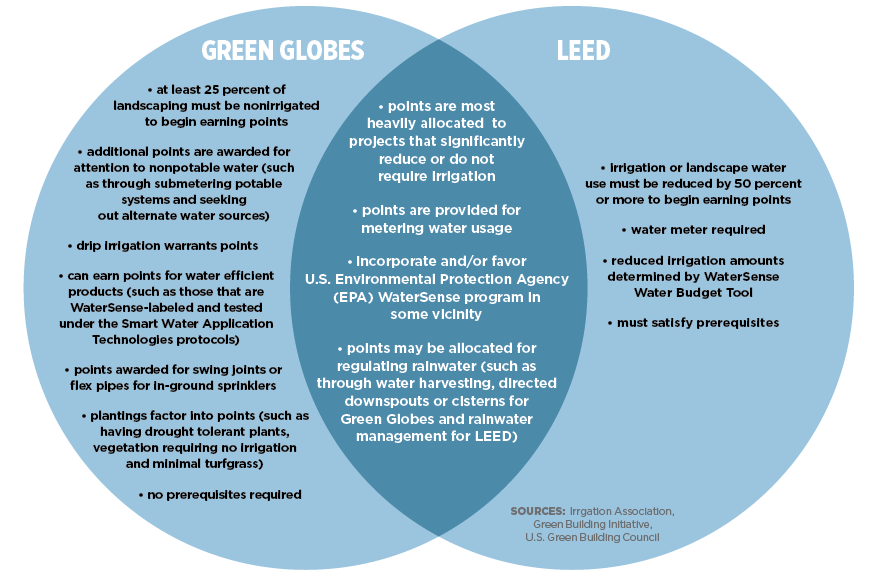We compare and contrast how the LEED and Green Globes rating systems for green buildings allocate points for irrigation and water efficiency.
With the General Services Administration recognizing both the Leadership in Energy & Environmental Design (LEED) and Green Globes programs as credible standards for green buildings, we examine the similarities and differences between the rating systems in terms of how points are allocated for landscape irrigation and water efficiency.
But first, let’s view the programs from the top down, looking at how their purposes and processes do or don’t align.
Both rate the sustainability of a building’s design, construction and maintenance on four levels of certification using a point-based system.
Green Globes, instituted in 2004 through the Green Building Initiative, operates on a 1,000-point scale. LEED, introduced through the U.S. Green Building Council in 2000, has a 110-point system. Landscaping- and irrigation-related points more heavily factor into LEED certifications versus Green Globes certifications. LEED allocates 10 percent of its total available points to landscaping and irrigation, whereas Green Globes allocates just 5 percent of its total points. Finally, here are some factors that play into how points are allotted for both systems.

To download a larger version of this chart, click here.
The bottom line
Search online for “Green Globes and LEED” and you likely will be flooded with scholarly studies and articles comparing these rating systems. Here’s the general consensus on the programs based on a few factors.
1. Price.
Generally, Green Globes is regarded as the less expensive route of certification. Part of this conclusion is due to consultation fees for on-site assessments. Green Globes applicants simply are assigned an assessor, whereas LEED applicants typically must hire a LEED-certified consultant for their assessment and to navigate the application process. In addition, Green Globes charges a flat rate for certification, whereas LEED’s prices are based on a project’s square footage.
2. Ease of use.
Green Globes is often deemed as having the easier application process. In fact, many coin it as the preferred system for “do-it-yourselfers” because the application is mainly conducted online and doesn’t entail hiring an assessor or consultant.
3. Reputation/credibility.
Generally, LEED is considered to have the upper hand to Green Globes, given it’s been around longer and has a track record of more than 50,000 certified projects worldwide. Also, critics have accused Green Globes of “greenwashing” for being financially supported by vinyl, chemical, wood and plastic manufacturers.

